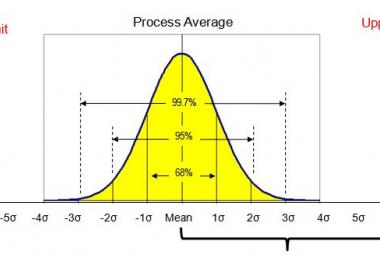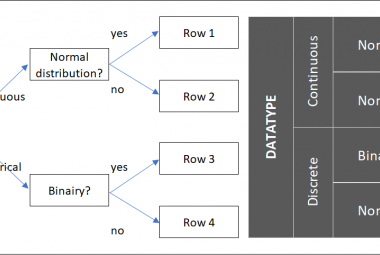In Making materials flow, Rick Harris, Chris Harris and Earl Wilson describe the topic of Material replenishment. In complex production processes, focusing on how each U-cell or production line is fed with material is just as interesting as the flow of the product through these cells.
The authors describe a four step plan to implement the most efficient material replenishment system: create a plan for every part (PFEP), install a market of purchased parts, design delivery routes and continuously improve & sustain the system.
The first step in designing the material replenishment system is the creation of a PLAN FOR EVERY PART (PFEP), a database or spread sheet which contains all relevant information about a certain part.
For each part, the PFEP could include what it is, where it is used, what the dimensions and weight of the part is, where it comes from, the lead time, and for instance supplier reliability. Again, everything that is useful to know should be put in this table.
When your company does not have a PFEP yet, start small, for instance by creating the plan for one work cell only at first. Other work cells, production lines or even sites can be added at later stages.
Two other tips are the define who is responsible for keeping the PFEP up to date and agree on how the PFEP is updated, for instance with the help of a request form.
The second step describes designing a MARKET FOR PURCHASED PARTS. This is a location in the factory where all the parts for a specific value stream or work cell are allocated and stored.
The amount of material stored in these areas depends on the situation, but the authors consider a day´s worth or material a good start.
The location of the market of purchased parts should be as close to the department of incoming goods as possible. This way, repacking parts into daily quantities can be kept as easy as possible.
Parts should be packed on carts, so that they can be transported through the factory without the use of forklift trucks or even pallet jacks.
Use flow racks to keep sequence (FIFO) as much as possible within the market. In practice, this means defining dedicated paths for picking and placing carts.
Finally, keep in mind that a minimum stock level should not occur between two deliveries. Build in a buffer, to prevent the area from running empty.
The next step is thinking about DELIVERY ROUTES around the site. The authors suggest to decouple the moving of materials from the actual production tasks and define a separate function for it.
The ideal form of transport is the Milk-run, which works like a public transport system. A transporter travels a fixed route, at fixed times, and takes whatever is waiting for him and delivers those parts at the individual locations.
Preferably, a train is used that can pull the different number of carts around the plant a second option is that the carts are moved by people. Only when these two options are not possible, a forklift truck should be used.
When a train is used to deliver the parts, a second choice to me made is about driving the train and preparing the train. These could be two separate functions. Rule of thumb is that preparing the train should require a maximum of 33% of the transporters total available time. Whenever the preparation of the train takes more than this 33%, it could be interesting to split the work into two different roles.
To create a pull system, material replenishment should be done by either FIFO or a supermarket principle. Pull signals used to visualize demand can be either an empty box which needs to be filled, or a card that includes instructions.
When the system is ready, the most difficult step is to SUSTAIN AND IMPROVE it. The authors describe the following principles (though they use other words):
A team board keeps track of performance of production cells and lines, including material delivery and a list of problems that need to be solved.
A kamishibai system should be implemented to be able to audit the material replenishment system. Both the production manager, logistic employees and management team members should regularly visit the production floor to check if the current standards are kept and whether they are still valid for today´s world.
With the help of KPI´s on the team board, the inventory trend can be visualized for both the market of purchased parts and the work cells. To influence these inventory levels, the size of the bins can be adjusted.
In a factory where many different types of parts are needed, designing a replenishment system is an important step in improving the flow of products through the site. The material replenishment system is like blood in the human body. All the organs (hence work cells) can work perfectly, but whenever there is a problem with blood flow (material), the organ and thereby the entire body, will not work properly.
Making materials flow is an easy to read book that helps you to improve the blood flow of your factory. It is a value addition to lean literature and I can recommend this book to everybody who works in logistics.
Ga verder naar:
Hoshin Kanri for the Lean Enterprise - T.L.Jackson (summary)
REFERENCE:
Harris, R., Harris, C., Wilson, E., 2003, Making Materials Flow - A Lean material-handling guide for operations, Production Control and Engineering Professionals, Cambridge (USA): The Lean Enterprise Institute (order this book)












